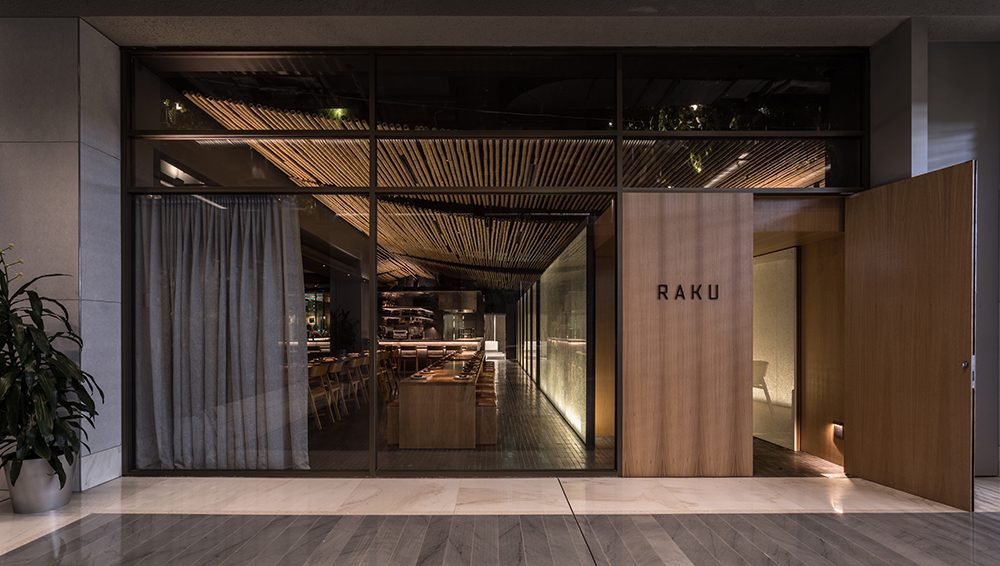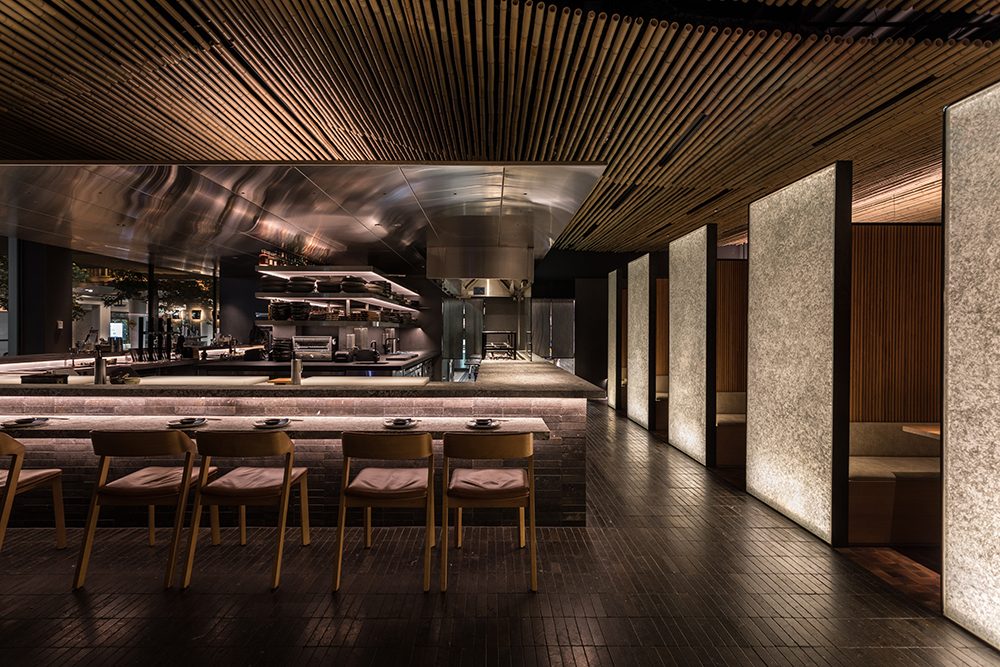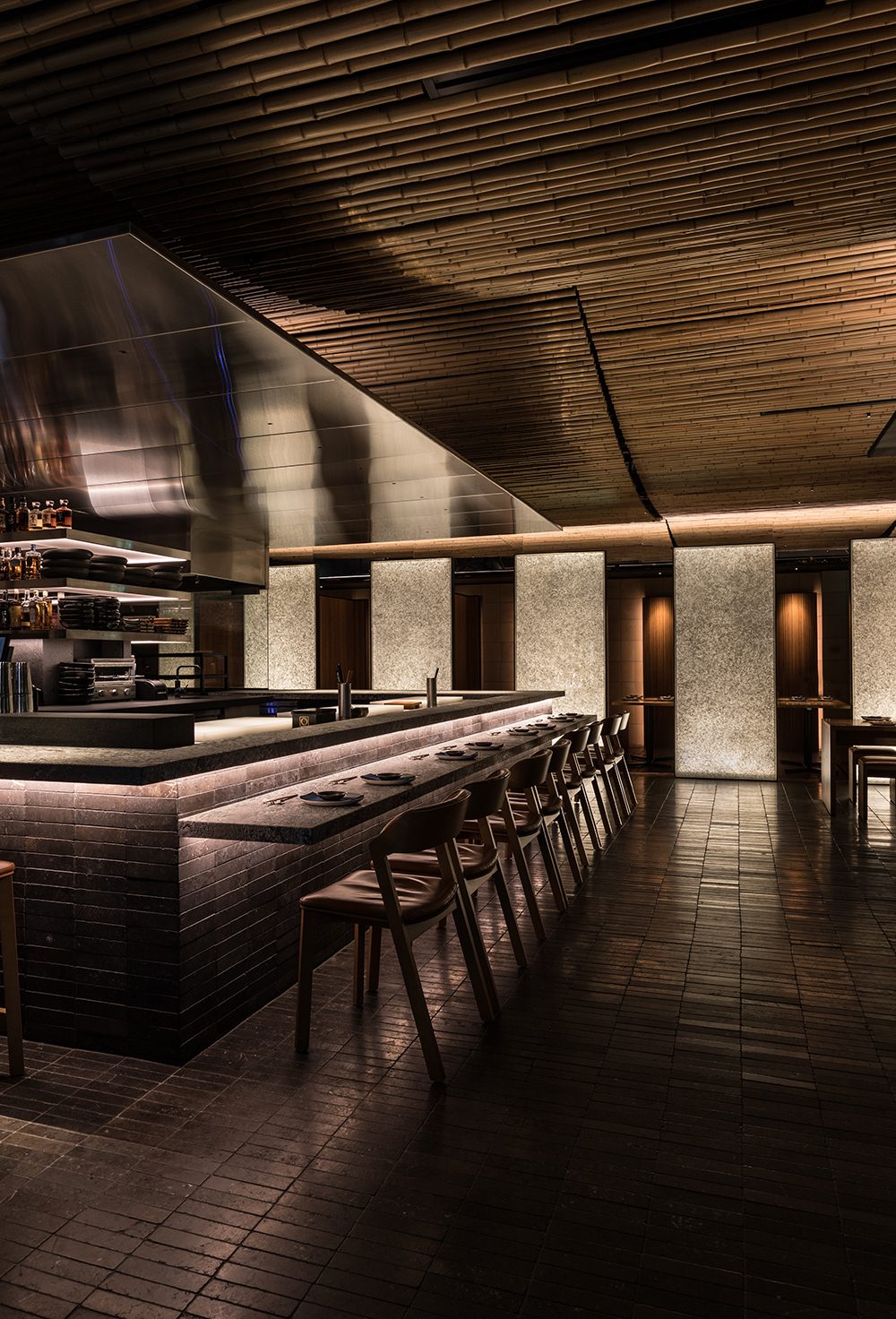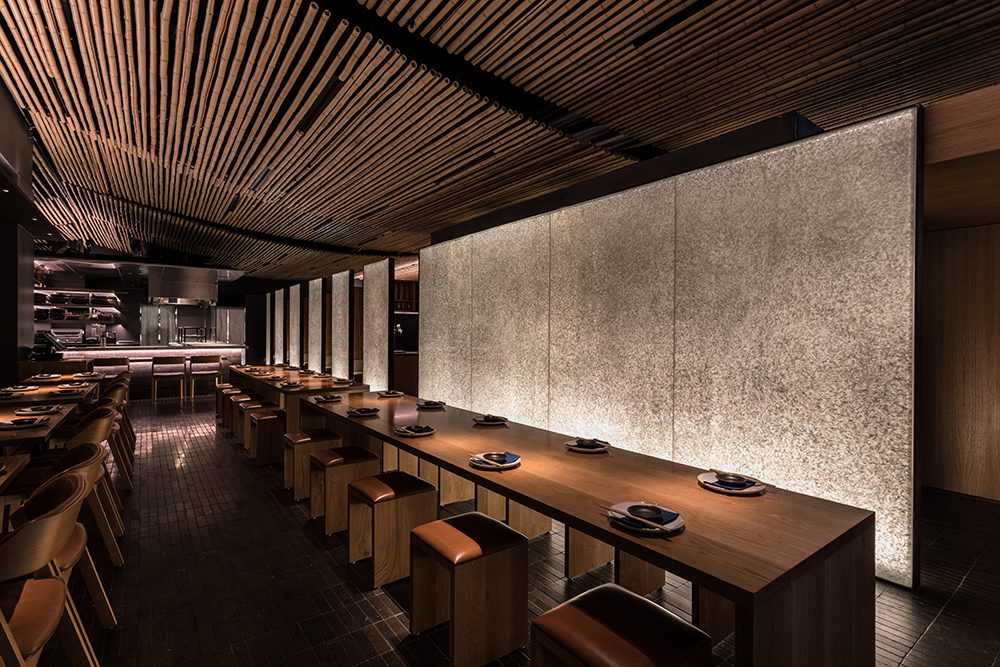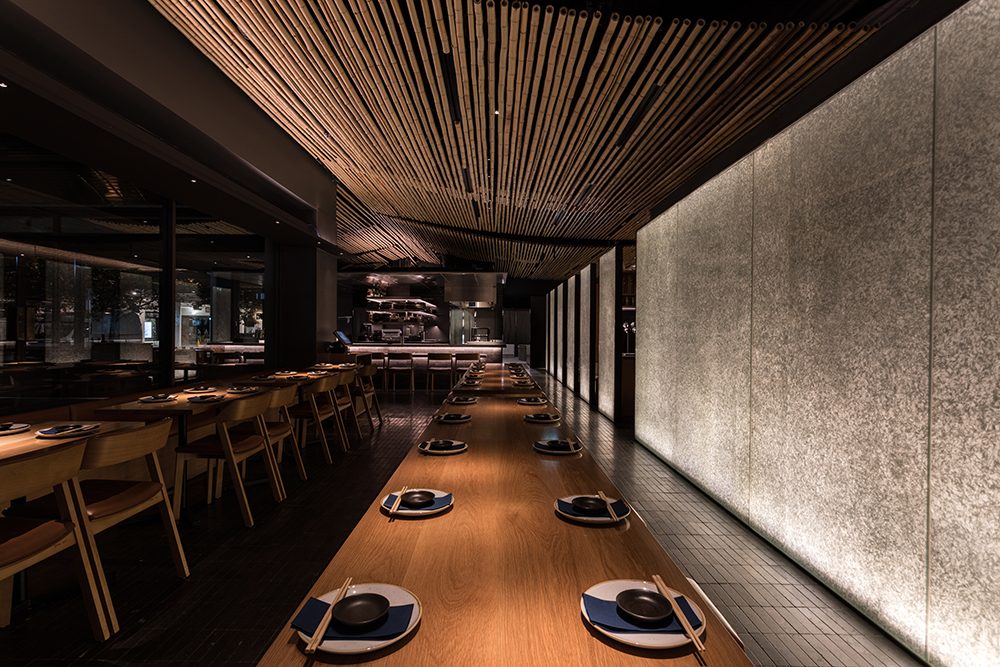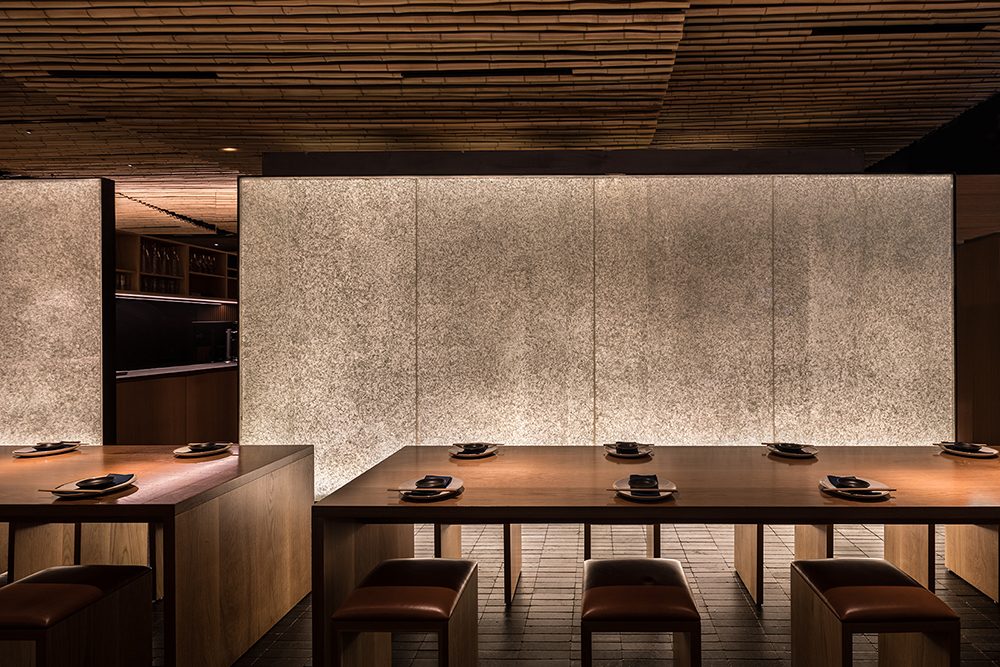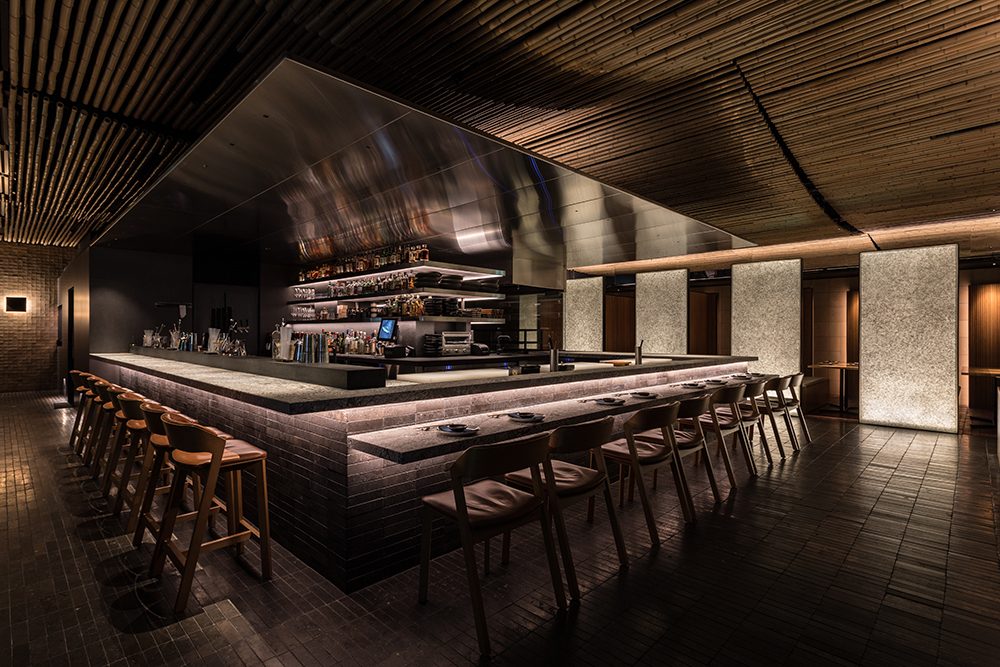The bamboo ceiling at Raku, a Japanese restaurant in Canberra, demonstrates how a well-engineered cabling system can perform a vital practical function without detracting from the creativity and aesthetics of a project.
Bamboo has great significance in Japanese culture, being considered a symbol of prosperity and purity. It is frequently used in Japanese cuisine, crafts and construction, and even in musical instruments. So it was a privilege for Tensile to be engaged to design, engineer and install the bamboo ceiling at the restaurant.
The architect for the project was Facet Studio, a Japan-based company with an office in Camperdown, Sydney. Facet’s concept was to ‘drape’ the ceiling with bamboo, much like a piece of fabric responding to the forces of gravity.
While resistance to gravity tends to form straight lines, succumbing to it creates catenary curves. Underlying this was the aim for the ceiling to create a connection between the cuisine (Japanese food being based on fresh, natural, seasonal ingredients) and the dining environment.
Innovative solutions for complex challenges
One of the project’s main challenges was that the ceiling could not be attached directly to the roof because air conditioning ducts, water and waste pipes and electrical systems were in the way. This also meant we faced the challenge of providing access for maintenance and repair services for these systems.
Finding a solution to these challenges is just the sort of thing we specialise in at Tensile. Our solution involved installing a series of 6mm stainless steel cables that span the roof, while incorporating access hatches for air-conditioning and fire prevention services.
Arriving at the right solution involved a lot of prototyping to develop a cabling system that would provide the strength to support the bamboo while being invisible. This was achieved to produce a ceiling that appears to sit naturally and at ease within in the building, belying all the complexity and engineering that went into creating it.
The finished product shows how a complex and challenging project can be made to look beautiful and simple through innovative solutions. It also demonstrates how we can integrate our components into a project to become part of the whole solution.
